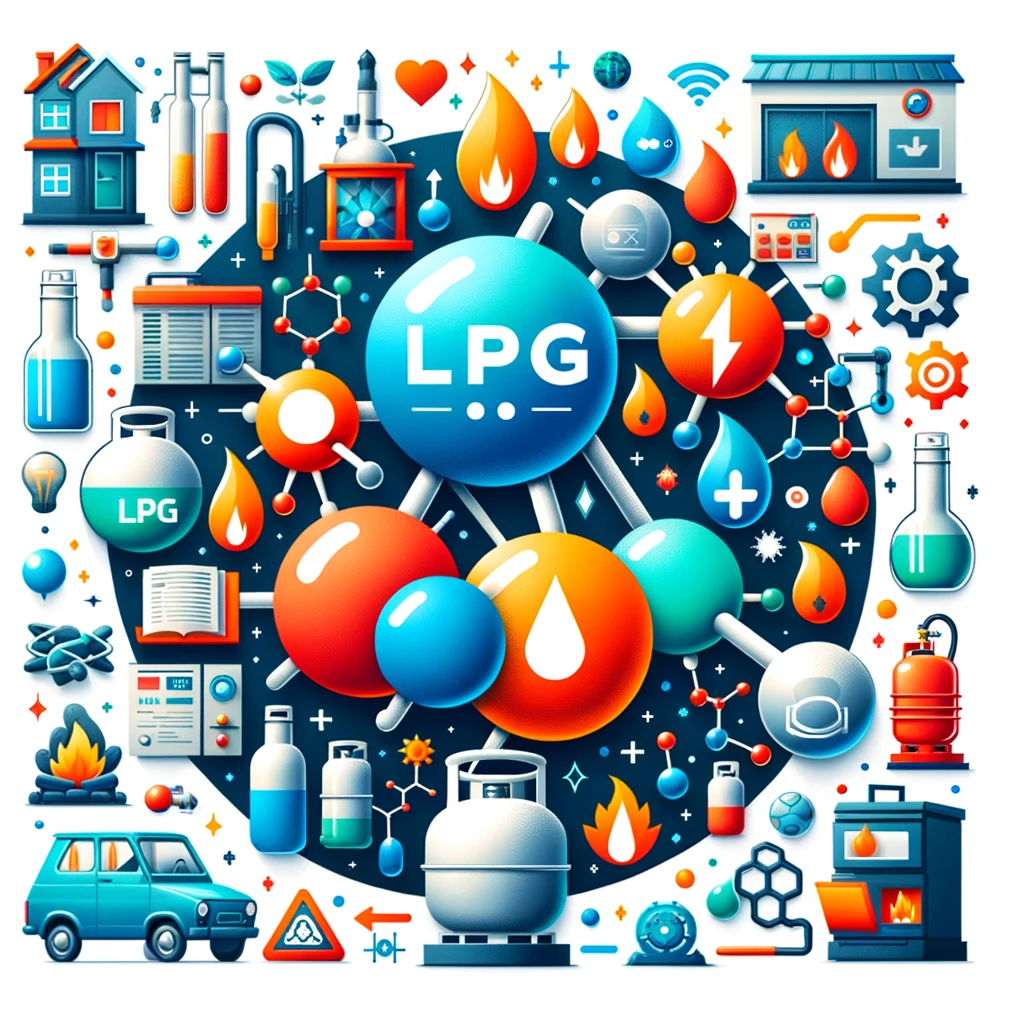The main contents of Liquefied Petroleum Gas (LPG) are propane (C3H8) and butane (C4H10), two hydrocarbons known for their efficient combustion and versatility as fuel sources. LPG is a colorless, odorless gas that is liquefied through pressurization, making it convenient for storage and transport. Its composition allows it to burn cleanly, producing significantly lower amounts of pollutants compared to coal and oil. This article explores the characteristics, production, applications, and environmental impact of LPG.
Characteristics of LPG
LPG is prized for its high calorific value, providing a substantial amount of energy per unit. It exists as a gas at atmospheric pressure but can be liquefied easily, making it an efficient, portable fuel. LPG’s ability to burn cleanly with fewer emissions of carbon dioxide, sulfur dioxide, and particulate matter contributes to its popularity as a domestic and industrial fuel.
Production and Sources
LPG is primarily produced through two methods: as a by-product of natural gas processing and through the refining of crude oil. The natural gas processing method involves separating LPG from methane, ethane, and other gases, while crude oil refining produces LPG as one of the several petroleum products. The versatility in production methods ensures a steady supply of LPG, making it a reliable energy source.
Applications of LPG
LPG’s applications are diverse, ranging from residential to industrial uses. In households, it is commonly used for heating, cooking, and hot water systems due to its efficiency and convenience. LPG is also used in agriculture, for crop drying, weed control, and as a fuel for farm equipment. In the industrial sector, LPG serves as a fuel for heating processes, in production operations, and as a feedstock for the petrochemical industry.
In addition to stationary applications, LPG is used as an automotive fuel, known as autogas. It is one of the cleanest alternative fuels available, offering a cost-effective and environmentally friendly option for vehicles. The transportation sector benefits from LPG’s lower carbon emissions, contributing to improved air quality and reduced environmental impact.
Environmental Impact
LPG’s environmental credentials are strong, especially when compared to other fossil fuels. Its clean-burning properties result in lower emissions of greenhouse gases and pollutants, making it a preferred choice in efforts to reduce air pollution and combat climate change. However, as a fossil fuel, LPG’s extraction and production processes can have environmental impacts, including habitat disruption and the potential for leaks and spills.
The future of LPG in a sustainable energy landscape is promising but complex. While it offers immediate environmental benefits over other fossil fuels, the transition to renewable energy sources is essential for long-term sustainability. Innovations in biogas technology, which can produce renewable LPG from organic waste, present an exciting avenue for reducing the carbon footprint of LPG and integrating it into a sustainable energy mix.
Challenges and Opportunities
The main challenges facing LPG include competition from other energy sources, regulatory changes, and the global push towards renewable energy. Despite these challenges, LPG remains a critical component of the global energy mix, particularly in regions where access to electricity and natural gas is limited.
The versatility and environmental benefits of LPG provide significant opportunities for its continued use and development. By focusing on innovative applications, improving efficiency, and reducing environmental impacts, the LPG industry can contribute to a balanced and sustainable energy future.
LPG, primarily composed of propane and butane, is a versatile and clean-burning fuel that plays a crucial role in meeting global energy needs. Its applications span from domestic heating and cooking to industrial processes and transportation, offering a cleaner alternative to traditional fossil fuels. While the environmental benefits of LPG are clear, the transition to renewable energy sources remains a priority for achieving sustainability. As technology and energy policies evolve, LPG’s role in the energy landscape will continue to adapt, highlighting its importance as a transitional fuel towards a more sustainable and low-carbon future.

